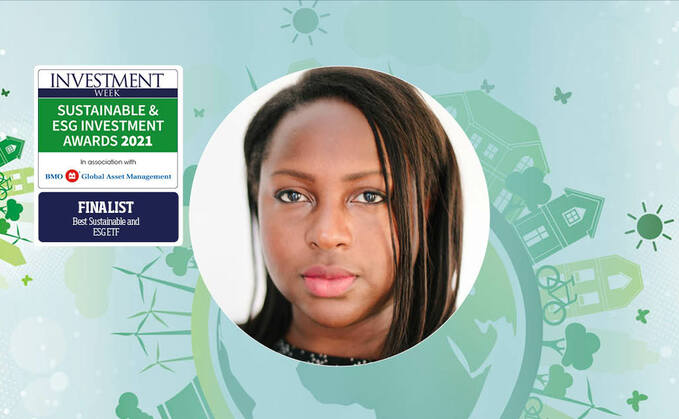
Sustainable & ESG Investment Awards Winners: Franklin Templeton
The Franklin Liberty Euro Green Bond UCITS ETF took home the award for Best Sustainable and ESG ETF at this year's Investment Week Sustainable & ESG Investment Awards.
Here we talk to Harriet Ssentongo, senior ETF sales specialist - UK, Ireland & Channel Islands at Franklin Templeton, about what they are trying to achieve for investors, their team's expertise and how they measure the impact of their ETF.
What is innovative about the ETF and what are you trying to achieve for investors?
Our thesis is that investors are willing to ‘pay up' for bonds that are environmentally beneficial, and this creates excess demand for bonds that carry a green label. The first innovative feature of our fund is that we do bespoke analysis on the environmental benefit of normal bonds - those that don't carry a green label - to find issuers that have good environmental profiles but have not have their price compressed from excess demand. This allows us to take advantage of the inefficiencies in the market. The second innovative feature is that our fund is an active ETF, giving investors the transparency and daily liquidity of an ETF, with the expertise of an active portfolio management team. We believe these features give investors an opportunity to contribute to a sustainable future without taking additional risk or cost, via a diversified pool of European green bonds.
What is the expertise of the team running the ETF and what are the wider internal/external resources available?
We have a dedicated portfolio management team consisting of David Zahn, Head of European and Sustainable fixed income as lead portfolio manager, and Rod Macphee as co- portfolio manager - bringing over 30 years of portfolio management experience. Gail Counihan is the dedicated Fixed Income ESG Analyst - with 10 years of experience in ESG, a Masters in Sustainability and more than five years focussed on the relative value and environmental benefit offered by green bonds. The team believes that not all green bonds are equal, and they rely on impact data that quantifies the emissions that are induced by green bond projects, to obtain the full picture of induced and reduced emissions. We have published our views on the fact that investors should always look beyond the green framework.
Can you give an overview of the methodology behind the ETF's construction and your review process?
For the 75% portion of the fund that invests in ‘green' labelled bonds, the credit analysts give their views on the credit fundamentals as well as the green aspect of the bond. If the bond is not supportive enough of a low-carbon future, the team will not invest. Where environmental credentials, track record or strategy is not strong enough - we will not invest.
For the 25% portion of the fund, the team uses an internal assessment framework that helps us to determine whether a bond is ‘aligned to a low-carbon future'. The assessment focuses on environmental performance and profile, governance of the issuer and the product or service being provided. This assessment is carried out and an argument for investment is shared with a broader investment committee, who all need to give their opinion on whether the bond satisfies a range of criteria.
What is your engagement policy with companies?
We don't have a specific engagement policy on this fund - we engage prior to investment to ascertain the likely impact, and we engage in order to gather impact metrics that are used for reporting.
How do you measure the impact of your ETF and communicate this effectively to investors?
Our sector specific research analysts scrutinise the expected impact at the bond roadshow, or pre-investment stage. To report on impact, the team uses impact data that incorporates that entire lifecycle of the project - including construction phase, operation and demolition. As part of that process, we tried to answer the following questions so that we can strengthen our assessment frameworks and ask better questions at the roadshow stage:
-Which projects typically yield the most impact?
-Can a project be managed so badly that any potential impact is eroded?
-What are the red flags in a green bond framework?
You can find out more about the awards by visiting the website here.













